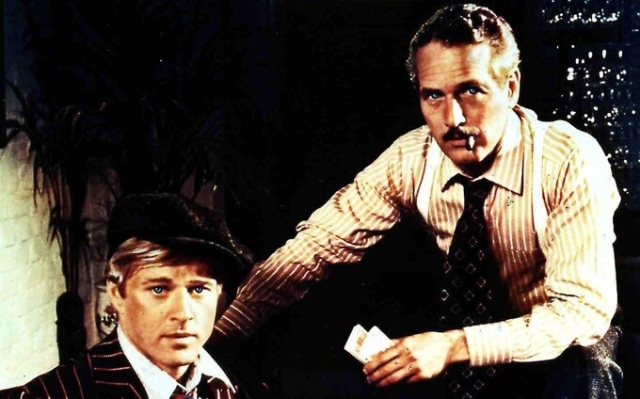 Robert Redford and Paul Newman in “Sting” Photo: United Archives GmbH/Alamy Stock Photo
Robert Redford and Paul Newman in “Sting” Photo: United Archives GmbH/Alamy Stock Photo
Even though “Sting” » became the highest-grossing film of 1974, winning seven Academy Awards, it took Robert Redford more than three decades to finally see his famous crime film, one of two films he made with Paul Newman.
Redford finally watched The Sting, released on Christmas Day 1973, when he and his grandson were looking for a video to watch in 2004. “Until now, I had never watched The Sting. I was in Europe filming The Great Gatsby when it came out in theaters, and then I didn’t want to look back,” Redford told talk show Inside the Actors Studio. “My daughter asked us to buy pizza and an old movie. My grandson said he hadn’t seen “The Sting” and I asked, “How come?” What happened to your mother? He then asked if I had seen it and I had to say “No.” We watched it and I really liked it.”
There's really a lot to love about the film, which has grossed over £124 million at the worldwide box office on its 50th anniversary after winning Oscars for Best Picture, Directing and Original Screenplay, Film Editing, Art Direction, Costume Design and Adapted Music. One of the film's enduring charms is that it marked the final pairing of Newman and Redford (who were nominated for an Oscar for Best Actor) after their stunning performances in the 1969 hit western Butch Cassidy and the Sundance Kid.
However, the famous reunion almost never happened. Although writer and creator David Shad Ward said that he always wanted Redford to play conman Johnny Hooker, Redford initially turned down the role. It was then offered to Jack Nicholson, but he refused. “I had enough business acumen to know that The Sting would be a huge hit, [but] at the same time, Chinatown and The Last Detail were more interesting films to me,” Nicholson explained. Hooker's role was also rejected by Warren Beatty, who said he was too busy with the failed campaign to overthrow Richard Nixon and elect George McGovern as president.
In late 1970, while a film school student, Ward came up with the idea for a film about the 1936 Chicago crooks, a proposal that eventually made its way to first-time producers Tony Bill and Michael Phillips. More than 40 years later, Phillips called Sting «still the best script I've ever read.» They continued to persuade Redford to register. He was interested in the project, but was wary of the idea of the inexperienced Ward directing such a complex plot. Ward's script, about two con men who invent what they call «the big con» to get revenge on a ruthless and vain New York racketeer named Doyle Lonnegan (played by Robert Shaw), contains a number of surprises and twists, all leading up to the finale. flourishing pleasant for the public.
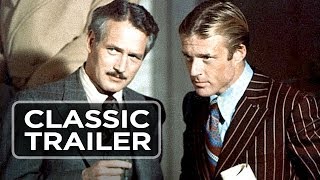
Redford remained adamant that the film «needed a master's hand to make it work,» and when George Roy Hill, who directed Butch Cassidy and the Sundance Kid, agreed to join the team, Redford agreed, too. Ward first envisioned Hooker as a teenager, imagining the taciturn Lee Van Cleef as the best person to portray Hooker's mentor, a middle-aged rogue virtuoso named Henry Gondorff. According to Phillips's recollections, Gondorff was originally intended to be a more minor role, with the man introduced as a «fat, slovenly, visiting guy.»
However, Hill had a different vision of the story. He sent the script to Newman in London (where he was filming British thriller Macintosh the Man) and the actor texted back: “This is great. I want to star in a film. I want to play Henry Gondorff.» Finally everyone was on the same page. Ward realized that pairing Redford and Newman would greatly enhance audience appeal; while Phillips admitted that although Newman was «the opposite of the original concept», they were persuaded by Hill's belief that he would «do a great job» making the character work. “We turned Gondorff into the stylish, elegant, handsome guy that Paul Newman is, and we quickly realized that we were very wise to agree to that change,” Phillips noted. Ward changed some of the dialogue to suit the more humorous dynamic between the two main stars.
Ward's first screenplay was Steelyard's Blues, which was made into a film starring Donald Sutherland as an ex-con who liked to compete in demolition derbies. Sutherland's then-girlfriend Jane Fonda played a sex worker in the film. Ward, who was 26 when he began writing Sting, grew up in a family that moved around the country. He told Matthew Spector and Sean Howe, authors of the 2011 book The Sting: A New Approach to Film, that it «really came out of nowhere… I think that's part of what drew me to the characters in The Sting.»
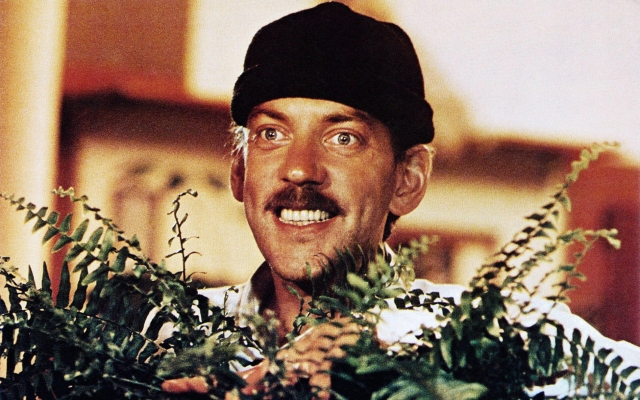 Donald Sutherland in the film “Steelyard Blues” Photo: Everett Collection Inc/Alamy Stock Photo
Donald Sutherland in the film “Steelyard Blues” Photo: Everett Collection Inc/Alamy Stock Photo
While Ward was working on the Steelyard Blues script, he began researching pickpockets and tricksters. “I was reading about con artists in general, and some books had chapters about gullible people, and I happened to read a couple and I thought these guys were fascinating. They are criminals, but they do not use weapons, do not resort to violence, and do not even steal. They actually, through the sheer force of their wit, get people to give them their money by playing on their greed, and I thought there was something almost heroic about it, turning the tables on people with privilege and wealth by using their own greed. against them, and in some way exposing the hypocrisy of people who think themselves better than the class of people who deceive them. The Sting was sort of the first of its kind to be a confidence stakes movie: no one had made a confidence stakes movie before. I also think the film features two of the most fascinating movie stars in our history, and it's fun.»
Ward came up with the name «Sting», but Universal Pictures didn't like it. “The phrase 'The Sting' wasn't a common term in the 1970s, and the studio didn't like it. This is the moment of separating the mark from his money, but nowadays it means any covert operation. And that’s not entirely correct,” Phillips said in 2012.
As part of the advertising campaign, Universal released a souvenir booklet detailing the history of gullible artists, the nature of their schemes, and the deceptions used by modern-day scammers in the 1970s. There was also a glossary of terms for trust games, many of which were used in the film, including «numbers racket», «sucker», «road signs», «not cheaters in heels», «wear a tutu», «run to the slots» » , «inner man» and «he was forced to be stabbed.» In the film, the actors also copied the 1930s roguish gesture of running their index finger across their nose to indicate hidden complicity.
Cool work: Newman and Redford Photo: Pictorial Press Ltd/Alamy Stock Photo
Although the main «con» in the film involves horse racing gambling, one of the best standard scams is when Gondorff beats Lonnegan during a rigged poker game. Hill brought in card specialist John Scarne (born Orlando Carmelo Scarnecchia) as a technical consultant, and he also served as Newman's stunt double during the card shuffling scene on the train. In between filming, Newman enjoyed listening to anecdotes from Scarn, who wrote 11 books about magic and gambling, taught Orson Welles how to play cards, and advised governments in various countries, including the US and UK, on how to prevent scammers from cheating their military personnel during filming on duty.
Part of Hill's intention with the production was to show that filmmaking and fraud share a common goal — to create complex narratives that captivate and distract audiences. To this end, he wanted The Sting to be a beautifully designed film with a realistic historical feel. Henry Bumstead won an Oscar for art direction, bringing to life Hill's vision of creating an artificial atmosphere with monochrome sets and soft, static indoor lighting. Hill, who wanted to pay homage to the films of the 1930s, filmed streets where there were no people walking and avoided using handheld cameras to film the main characters.
Bumstead, who played a key role in Alfred Hitchcock's artistic triumph Vertigo and whose work recreating 1930s Alabama in To Kill a Mockingbird earned him his first Oscar, has masterfully recreated Depression-era Chicago. “When we started filming The Sting,” Bumstead recalled, “I suggested doing the whole thing in browns and sepia tones, which would evoke a vintage, smoky 1930s feel. George and the great cinematographer Bob Surtees loved the idea and we went ahead with it.” In a canny move, Universal Studios Hollywood reused the set for the 1969 comedy Gailey Gailey, starring Beau Bridges, which was based on Ben Hecht's memoir of his time as a cub reporter in Chicago in the 1930s. e years.
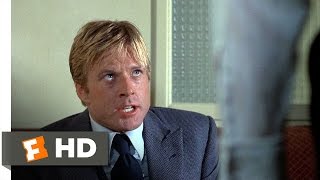
Surtees was nominated for an Oscar for his cinematography and used several period techniques popular in the 1930s, including the «iris shot» fade-out, which wraps the action in an ever-diminishing circle. Other complex technical devices were used to transition from one scene to another, including images that turn like pages.
In the film, the story is divided into chapters, which are announced by inserted title cards (created by Yaroslav Gebr) with the inscriptions «Setup», «Hook», «Fairy Tale», «Wiretap», «Disconnection» and «Bite». This style deliberately echoed the warm, rusty reds, browns and yellows of artist Norman Rockwell's Saturday Evening Post covers. Hill insisted there was «a lot of nostalgia» about all the work.
While Sting is full of tension and funny moments of relief, it is also a gritty Depression-era story about the underbelly of American life. Despite this, Hill insisted that the film be «glamorous, elegant and without the runny nose.» The splendor of some of the pre-war attire has been painstakingly recreated: meticulously tailored suits, snap-brim hats and men in alligator shoes with white wings are all factors that earned Edith Head an Oscar for costume design. The main poster for the film featured Redford and Newman dressed as characters as if on the cover of the Saturday Evening Post, above the tagline «…all it takes is a little confidence.»
 Stylish: The film masterfully recreated the atmosphere of 1930s Chicago. Photo: Pictorial Press Ltd/Alamy Stock Photo
Stylish: The film masterfully recreated the atmosphere of 1930s Chicago. Photo: Pictorial Press Ltd/Alamy Stock Photo
The ensemble cast for «Sting» was exemplary: Harold Gould (Kid Twist), Ray Walston (JJ Singleton), Charles Durning (Lt. Snyder), Charles Dierkop (Floyd), Dimitra Arliss (Loretta Salino), Eileen Brennan (Billy) and Dana Elcar (FBI Agent Polk) gives a wonderful performance as criminals and law enforcement officers. Robert Earl Jones, father of James Earl Jones, also gives a brilliant performance in his short role as murdered conman Luther Coleman.
However, for the film to really have an impact, Hill knew they needed a villain who could match Newman and Redford. “We hired Robert Shaw at the last minute after our first candidate, Richard Boone, stopped returning our calls,” Hill recalled. “Thankfully, Shaw turns out to be the most interesting antagonist imaginable. Few people know that Shaw's limp was real: he injured his leg playing racquetball and could not walk properly.» Shaw had to wear a knee brace under the 1930s-style wide-leg trousers he wore in the film. Shaw was an outspoken personality who was happy to persuade Ward to make changes that benefited his role. «The original character I wrote was a Polish gangster, not an Irish gangster, but Shaw essentially did it himself,» the writer said.
Lancashire-born Shaw was a volatile character, the son of an alcoholic who committed suicide when Shaw was just 12 years old. Shaw, who married three times and fathered 10 children, was also known for his love of drinking, drinking whiskey, vodka and spirits. genie on the set. Despite his temperament, Universal producers Dick Zanuck and David Brown liked him, and they later convinced Steven Spielberg to cast Shaw as the hot-tempered shark hunter Quint in Jaws.
 Close Encounters: Robert Shaw, Robert Redford and Paul Newman Photo: ScreenProd/Photononstop/Alamy Stock Photo
Close Encounters: Robert Shaw, Robert Redford and Paul Newman Photo: ScreenProd/Photononstop/Alamy Stock Photo
The atmosphere on the set of Sting was always positive. Already close to Newman, Redford also became friends with Brennan. After gaining widespread recognition as the sarcastic Captain Doreen Lewis in Private Benjamin, the actress was seriously injured in a 1982 car accident in California. She was walking home after lunch with co-star Goldie Hawn when she was hit by a car. She had two broken legs, a broken nose and multiple fractures to her face. She later became addicted to painkillers. There is a touching video online of her reading a letter Redford sent to her nursing home, expressing his warmest wishes as she battled to recover.
Redford and Newman were known for their pranks. each other and their filmmaking colleagues. When Newman learned that Hill had warned Ward not to indulge Newman in discussing the script, Newman pursued Ward until he caught him off guard. Newman then jumped out and shouted, “Gotcha!” I know that you are avoiding me.
Redford, for his part, sometimes joked with an extra named Greg, a young surfer from Southern California whose uncanny resemblance to the star earned him a job as Redford's stunt double before filming. Redford's timing often amused the team. While filming a scene in an old barbershop in Illinois Grand Central Station, an assistant director asked Hill, «Are you waiting for Redford?» The director rolled his eyes in mock irritation and replied, “Who are we always waiting for?” When Redford finally arrived, the team erupted into spontaneous, ironic applause.
One of The Sting's achievements is its catchy music; and the film is inseparable from the ragtime tunes of Scott Joplin, a composer apparently suggested by Hill's young son. In the 2005 documentary The Art of the Sting, Ward revealed that he initially opposed Hill's proposal to use Joplin's music on the soundtrack, raising concerns that the period of history was too late as an era for ragtime. Hill responded that only about five people in the room would notice and no one would care. The film's score composer, Marvin Hamlisch, made the wise decision to ensure that the piano melodies were heard clearly and not behind the dialogue.
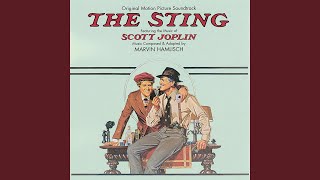
Hamlisch, who set the record as the youngest student at the Juilliard School of Music when he enrolled at the age of six, played the film's piano solo in versions of «The Entertainer», «Consolation», «Gladiolus Rag», «Pineapple Rag» and «Ragtime Dance» Sting can be credited with reviving an entire musical genre and turning ragtime into a pop phenomenon. Hamlisch won an Oscar for his score, and his version of The Entertainer reached number one on the Billboard chart, selling more than two million copies in America alone. Three years after the film's release, the Pulitzer Prize jury awarded Joplin a special posthumous award «for his contributions to American music,» and there is no doubt that Sting contributed to the rise in public awareness of Joplin's music.
One of the deepest themes of Ata is corruption in America. We are shown bureaucrats and law enforcement officers on standby at all times, and the film's box office performance was not hurt by the fact that it was released in the midst of Nixon's Watergate debacle. Newman, who disliked the lawbreaking president, was surprised by the timing. Years later, it was revealed that Newman was the only actor on Nixon's special «enemies list,» ranking 19th with a special black mark for supporting «radical liberal ideas.»
Following its success, «Sting» was the subject of several controversies, including a lawsuit over the script. In October 1974, David Maurer, professor emeritus at the University of Louisville, filed a complaint alleging that his 1940 book The Great Fraud served as the basis for Ward's script. Instead of fighting a lengthy legal battle, Universal paid Maurer approximately £300,000 in compensation. The Academy's Writers' Division later ruled that Ward had not plagiarized Maurer's work and that his Oscar should stand. In 1982, screenwriter Steve Shagan, who was a contender for the 1973 Oscar for his screenplay Save the Tiger, wrote to the LA Times to confirm Ward's innocence on charges of plagiarism.
Fifty years have passed. later. Since its release, The Sting has remained a masterpiece of cinematic storytelling and highly rewatchable entertainment. As Ward, now a professor at Chapman University in California, where he teaches screenwriting, said, “It feels like the movie has stood the test of time and people are still responding to it.”
The plot of “The Sting” is elegant. , sure, but much of the film's appeal comes from the infectiously joyful bond between the late Newman and Redford. As Newman's wife Joanne Woodward joked after filming «Atta,» «Bob and Paul really have chemistry. Someday they will run away together, and I will remain.”


























































Свежие комментарии